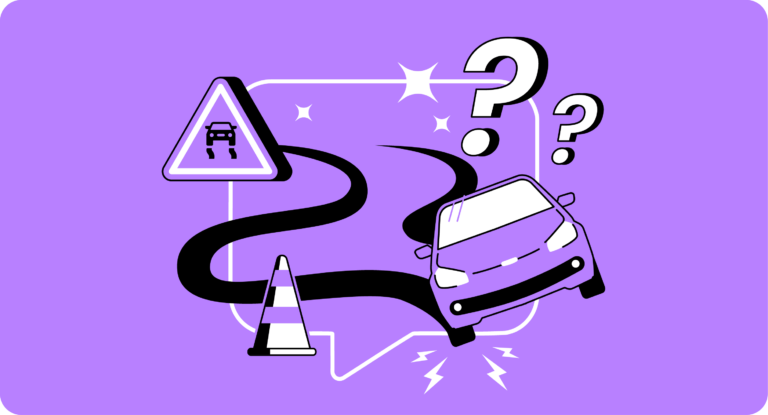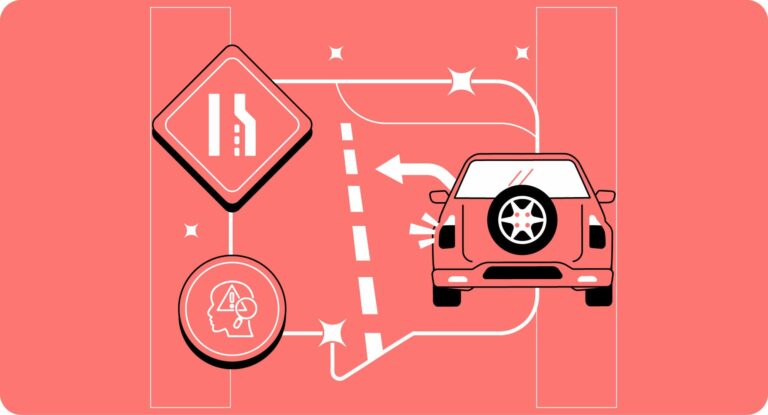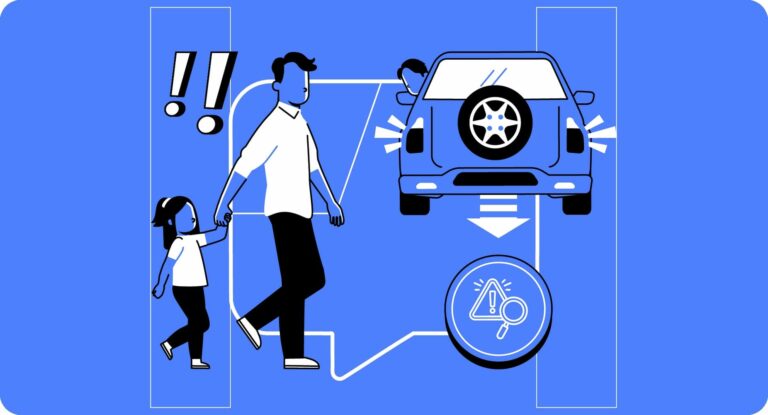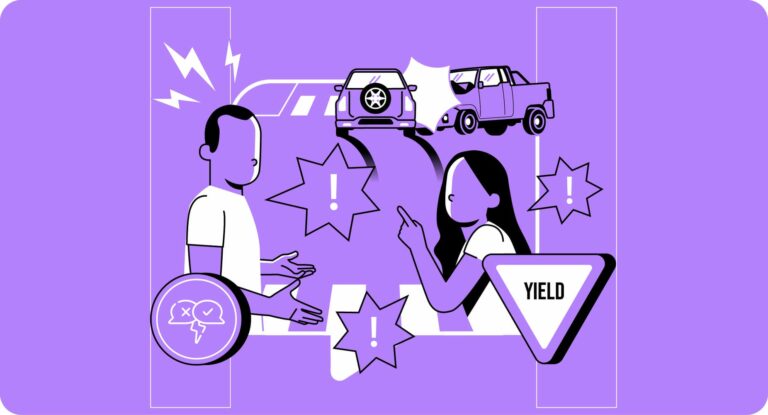Panic sets in. Your car fishtails wildly, tires lose grip on ice or slick oil. This isn’t a Hollywood stunt gone wrong – it’s a real skid.
In this guide, Text Kevin Accident Attorneys will provide you with the knowledge you need to handle a skid with composure, regain control of your vehicle, and avoid an accident. Remember, a cool head and the right maneuvers can turn a heart-stopping moment into a controlled recovery.
What is a Skid?
Imagine cruising down the road, feeling in control – then, suddenly, your car loses its grip. This unnerving experience, known as skidding, occurs when your tires lose traction with the road surface. Whether from overenthusiastic braking, excessive acceleration, or dangerous conditions like ice or oil, skids can turn a smooth drive into a heart-pounding struggle for control.
How Tire Condition Affects Skidding
One of the factors that can cause skidding on the road is the condition of the tires. Tires are designed to have a certain amount of tread depth, which helps them grip the road surface and maintain traction. Tread depth also allows water, snow, and other debris to be channeled away from the contact patch, reducing the risk of hydroplaning or sliding.
However, as tires wear out over time, their tread depth decreases, and their performance deteriorates. Balding tires have less or no tread left, which means they have less or no contact with the road. This makes them highly prone to skidding, especially in wet or slippery conditions. Balding tires also have less resistance to punctures, blowouts, and overheating, which can lead to further loss of control or accidents.
Therefore, it is important to check the tire condition regularly and replace them when they reach the minimum legal tread depth or show signs of damage. This can help prevent skidding and improve safety on the road.
The National Highway Traffic Safety Administration (NHTSA) recommends a minimum tread depth of 2/32 of an inch for all passenger car and light truck tires. This recommendation is based on safety studies that have shown that tires with less tread depth are more likely to hydroplane (lose traction on wet roads) and have longer stopping distances, both of which can increase the risk of a crash.
However, it’s important to note that:
- Some tire manufacturers recommend replacing tires before they reach 2/32 of an inch due to other factors, such as tread design and compound. You can find the recommended tread depth for your specific tires in your owner’s manual or on the tire sidewall.
- Tread wear can vary depending on driving habits and road conditions. If you frequently drive in wet or snowy weather, or if you notice uneven tread wear, you may need to replace your tires sooner than 2/32 of an inch.
How Hydroplaning Occurs and How to Avoid It
Hydroplaning is a phenomenon that occurs when a layer of water builds up between the tires of a vehicle and the road surface, preventing the tires from making direct contact with the road. This reduces the friction and traction that the tires need to maintain control and stability of the vehicle.
Hydroplaning can happen when the vehicle is traveling at high speeds on wet or flooded roads, especially if the tires are worn out or underinflated. When the vehicle encounters a puddle or a patch of water, the water pressure in front of the tire pushes the water under the tire, creating a thin film of water that separates the tire from the road. This causes the tire to lose its grip and start to skid or slide along the water surface.
When hydroplaning occurs, the driver may experience a sudden loss of steering, braking, and acceleration ability. The vehicle may drift or veer off course, or spin out of control. Hydroplaning can also increase the risk of collisions with other vehicles or objects on the road.
To avoid hydroplaning, drivers should follow these tips:
- Slow down when driving on wet roads, especially during heavy rain or when there is standing water on the road. The faster the vehicle is going, the harder it is for the tires to disperse the water and maintain contact with the road.
- Maintain a safe distance from the vehicle in front of you, as it may create a spray of water that can impair your visibility and increase the chances of hydroplaning.
- Avoid sudden or sharp turns, braking, or acceleration, as these can cause the tires to lose traction and skid. Instead, apply gentle and steady pressure on the brakes and accelerator, and steer smoothly and gradually.
- Check the tire pressure and tread depth regularly, and replace the tires when they are worn out or damaged. Properly inflated and maintained tires can provide better traction and performance on wet roads.
- If you feel the vehicle starting to hydroplane, do not panic or overreact. Keep a firm grip on the steering wheel, and steer in the direction that the vehicle is heading. Do not slam on the brakes, as this can cause the vehicle to skid more. Instead, ease off the gas pedal and gently apply the brakes if you have anti-lock brakes (ABS). If you do not have ABS, pump the brakes lightly until you regain control.
What to Do If My Car Slides on Ice?
When you encounter ice on the road, you need to act quickly and carefully to prevent your car from skidding.
Follow these steps:
- Release the gas pedal. This may help your car regain traction and stop sliding.
- Steer the car in the same direction as the slide. This will help you align your car with the road and avoid spinning out.
- Don’t turn the steering wheel too much. You want to avoid making the slide worse or causing the car to fishtail.
- Straighten the steering wheel as the car stabilizes. This will help you resume your normal driving.
What Should I Do if My Front Wheels Start to Skid?
When the front wheels of your car lose traction and start to skid, you need to do the following to regain control:
- Stop accelerating or braking.
- Steer the car smoothly towards where you want to go.
- Apply the brakes lightly as the car slows down.
How to Recover from a Rear Wheel Skid?
A rear wheel skid can happen when you brake or accelerate too hard on slippery roads or when you oversteer or understeer your vehicle. A rear-wheel skid can cause you to lose control of your vehicle and potentially crash. To prevent this, you need to follow these steps to regain control:
- Release the gas and brake pedals. This will help your rear wheels regain traction and stop sliding. Do not slam on the brakes, as this can make the skid worse.
- Steer in the direction of the skid. This means turning your steering wheel towards the side where your rear wheels are sliding. For example, if your rear wheels are sliding to the right, steer to the right. This will help you align your vehicle with the road and avoid spinning out.
- Gently tap the brakes. As your vehicle slows down, you can apply the brakes lightly to reduce your speed and stabilize your vehicle. Do not brake too hard, as this can cause your rear wheels to lock up again.
- Straighten the steering wheel As your vehicle stops skidding, you can steer the wheel back to the center position. This will help you resume your normal driving.
How to Free Your Car from Snow, Mud, or Sand
Getting stuck in snow, mud, or sand can be a frustrating and stressful experience. However, there are some steps you can take to try to get your car out of the sticky situation. Here is what you should do:
Stay Calm and Safe
Before you attempt to move your car, make sure you are not in danger of being hit by other vehicles or falling objects. If you are, get out of the car and find a safe spot to wait for help.
Assess the Situation
Check how deep your car is stuck and how much space you have around the tires and wheels. You will need some clearance and traction to get out. Also, see if you have any tools or materials that can help you, such as a shovel, a tow strap, a jack, cat litter, sand, or gravel.
Clear the Area
Use a shovel or your hands to remove any snow, mud, or sand that is blocking your tires and wheels. You may also want to dig a path in front of and behind your car to create some room to maneuver.
Improve Traction
Sprinkle some cat litter, sand, or gravel around your tires to create more friction. You can also use some cardboard, carpet, or mats to place under your tires. Alternatively, you can try to lower the air pressure in your tires to increase the contact area with the ground.
Rock the Car
Shift into a low gear and gently accelerate to move the car forward. If you feel resistance, stop and shift into reverse. Repeat this process until you gain some momentum and free the car. Do not spin your tires too much, as this can make the situation worse. You can also ask someone to push the car from behind or pull it from the front with a tow strap if possible.
Call for Help
If none of the above methods work, you may need to call for professional assistance. A tow truck can pull your car out of the snow, mud, or sand with ease. However, this may cost you some money and time, so it is better to avoid getting stuck in the first place.
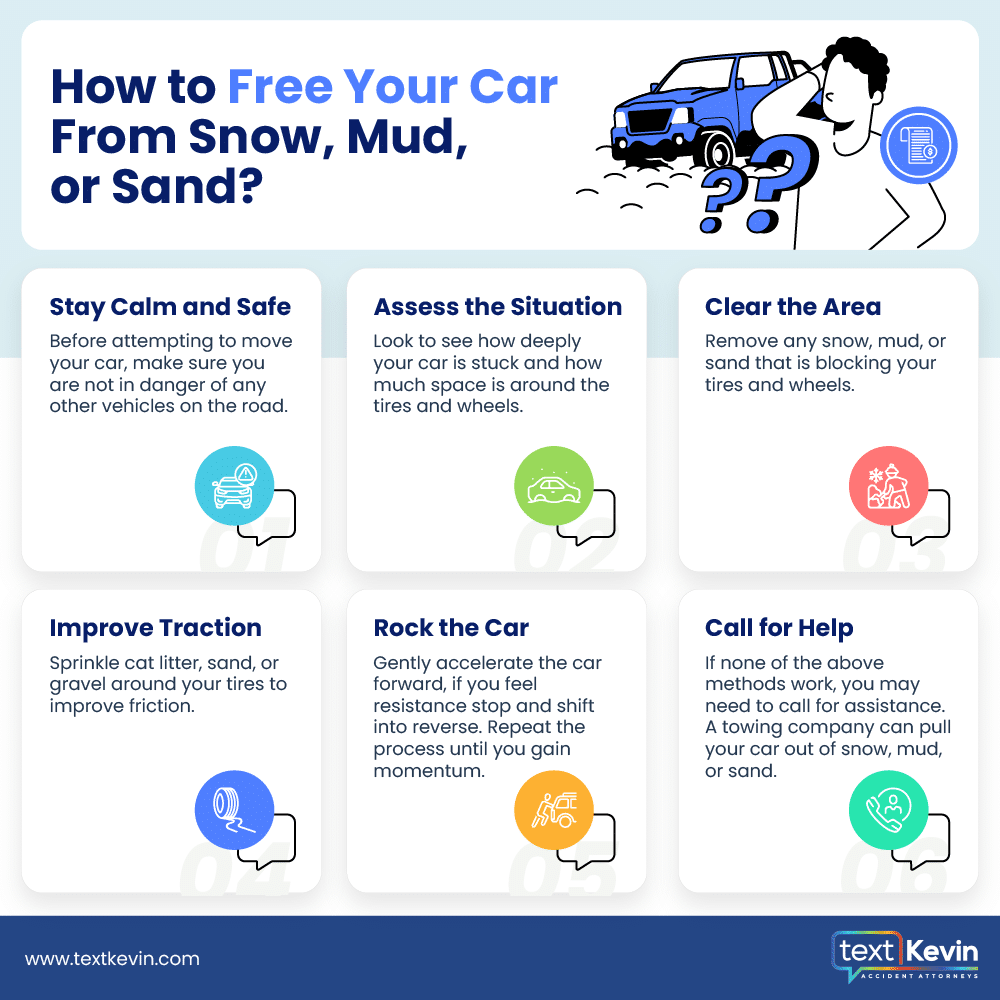
Steps to Take After a Car Accident
A car accident can be a scary and stressful experience, but it is important to stay calm and take the right actions to protect yourself and your rights. Here are some steps you should follow after a car accident:
Check for Injuries
The first thing you should do is check yourself and anyone else involved in the accident for injuries. If anyone is hurt, call 911 and request an ambulance. Even if you think you are fine, you should still seek medical attention as soon as possible, as some injuries may not show up right away.
Move to a Safe Place
If you can, move your car to the side of the road or a nearby parking lot to avoid blocking traffic and causing more accidents. If your car is not drivable or someone is trapped inside, leave it where it is and get yourself and your passengers to a safe place. Turn on your hazard lights and use road flares or emergency triangles to warn other drivers.
Call the Police
You should always report the accident to the police, regardless of how minor or severe it is. The police will document the scene, interview the parties and witnesses, and issue a police report. This report can be very helpful when you file a claim with your insurance company or pursue legal action against the other driver. Ask the officer for their name, badge number, and contact information, and get a copy of the report or find out how to obtain one later.
Gather Evidence and Information
While you wait for the police and medical help to arrive, you should try to collect as much evidence and information as possible. This includes taking pictures or videos of the accident scene, the damage to your car and the other car, the road conditions, the traffic signs, and any injuries. You should also get the names, phone numbers, and addresses of any witnesses who saw the accident. Additionally, you should exchange contact and insurance information with the other driver, such as their full name, driver’s license number, license plate number, car make and model, and insurance company and policy number. However, you should avoid discussing fault or apologizing for the accident, as this could be used against you later.
Contact Your Insurance Company
As soon as you can, you should contact your insurance company and report the accident. Give them the details of the accident, the police report number, and the other driver’s insurance information. Be honest and cooperative, but do not admit fault or agree to any settlement without consulting a lawyer. Your insurance company will assign an adjuster to handle your claim and determine the amount of compensation you are entitled to.
Consult a Car Accident Lawyer
If you suffered any injuries or damages due to the other driver’s negligence, you may want to consult a car accident lawyer to help you recover the full compensation you deserve. A lawyer can advise you on your legal options, negotiate with the insurance companies, and represent you in court if necessary. A lawyer can also protect you from any unfair or lowball offers or any attempts to blame you for the accident.
Can I Get a Traffic Ticket for Skidding?
While the skid itself might not directly lead to a specific citation, your overall driving behavior during and leading up to the incident could.
Here’s what you need to know about potential traffic violations associated with skidding accidents:
- Driving too fast for road conditions: This broad category encompasses exceeding the posted speed limit but also driving too fast for visibility, weather conditions, or road surface (like ice or slippery patches). If your speed contributed to the loss of control, a ticket is likely.
- Exceeding the posted speed limit: Even if conditions seem ideal, exceeding the posted limit is a clear violation and could land you a ticket, regardless of whether it directly caused the skid.
- Careless driving: This broad category covers behavior that demonstrates a lack of due care and caution, potentially including actions that led to the skid, like distracted driving, following too closely, or improper lane changes.
- Reckless driving: This serious offense involves behavior that shows a willful or wanton disregard for the safety of others and property. If your actions displayed a blatant disregard for safety before or during the skid, a reckless driving charge could be issued.
Additional Considerations
- Speed contests: Engaging in competitive speeding, even indirectly, can result in a hefty ticket and potential driver’s license suspension.
- Driving under the influence: If alcohol or drugs impaired your judgment or reaction time, contributing to the skid, a DUI charge will likely be added to your woes.
Remember, traffic violations associated with skidding accidents depend on the specific circumstances and your overall driving behavior. Consulting a legal professional can help you understand the specific charges you face and explore your options.
However, the best way to avoid traffic tickets and accidents altogether is to practice safe and responsible driving habits, especially in challenging weather conditions or road situations. Drive defensively, adjust your speed accordingly, and maintain control of your vehicle to ensure a smooth and safe journey, even when the road gets slippery.
Who Is At Fault for a Car Skid Accident?
When your car skids on the road, you are likely to be held responsible for any accident that results from it. You are expected to maintain control of your vehicle and prevent it from skidding.
However, if another car is tailgating you and hits you when you skid, the other driver may also share some of the blame for the accident. They should have kept a safe distance from you and avoided the collision.
What Are The Main Causes Of Skid Accidents?
Skid accidents often occur on roads that are slippery due to:
- Ice
- Water
- Loose gravel
- Sand
- Oil patches
Contact a California Car Accident Lawyer
Skidding car accidents can result in serious injuries and damages that are not your fault. If you have been hurt in such an accident, you deserve to be compensated for your losses. At Text Kevin Accident Attorneys, our skilled car accident lawyers in California will help you fight for your rights and get the best possible outcome for your case. Call (888) 965-3827 today.


